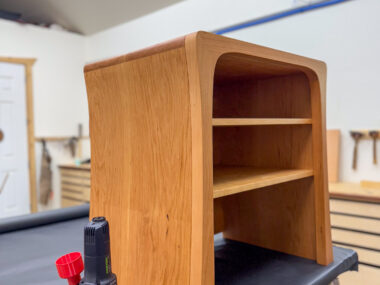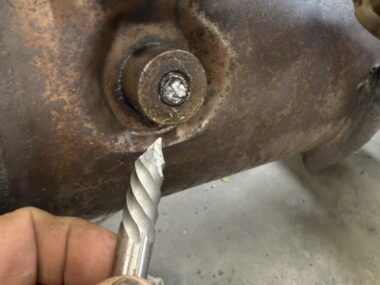Plug Bug: BMS Install
I’ve been driving the car for a few weeks now, and I’m behind on some blog posts about it. The car has a small problem with the DC-DC converter, so I couldn’t drive it this past week (more on that later!).
I purchased the Elithion Lithiumate BMS (Battery Management System). The directions are all located in the online manual, however, some things are not obvious on what to do and it was tricky to set up. In fact, I still don’t have it dialed in quite right, as it is constantly saying I have a poor “State of Health” for the batteries.
Anyways, here is a shot of the BMS modules on top of the cells:
I have 48 cells, and I divided my cells into four banks, as recommended here. Bank 0 consists of 5 cells in the rear. Bank 1 is the front trunk pack. Banks 2 and 3 are the rear pack. There are not an equal number of cells in each pack, but that doesn’t matter. The BMS controller module sits behind the rear cells.
There has to be a way to sense the input (charging, or source) current, and the output (discharge, or load) current. A good charger would be able to tell the BMS what current it was outputting, but the Manzanita Micro PFC30 that I’m using doesn’t do that. So, my BMS setup came with this inline current sensor:
The charger has some pretty fat 6 AWG wires, and this inline current sensor is good up to 20 amps, however, the PFC 30 is supposed to take in 30 amps and output up to 40 amps since it is “buck enhanced” (I don’t know what that really means). Splicing in this tiny wire, no matter how short, seemed like a bad idea. So, I asked on the Elithion forums and Davide (the engineer) said I could just use the single 600 amp load current sensor for both readings. It will have up to 1% error in reading the value, and that is 6 amps. That also worried me, but it has been what I’ve been using.
The load current sensor goes around the cable:

and is good for up to 600 amps. I also have another 50 amp one that I will try to use as a source current sensor (however, I couldn’t get it to work correctly yet).
For me, an important page was wiring to the manzanita charger. I decided to do this type of setup, since it is easiest:

You connect the relay to the HLIM output of the BMS (the High Limit, which indicates the charger to turn off). Now, I wired it slightly differently than what was said in the instructions. Basically, the HLIM input will ground the 12v and turn on the relay, completing the circuit for pins 1-2 on the charger, causing it to turn off. However, the HLIM is normally open, meaning the charger will charge. If the BMS battery source dies (ie: my 12 volt car battery), then it could leave the charger charging! That is bad. So, instead I wired it to the automotive relay’s 87a option, and reversed the HLIM to be normally *closed* when it should charge. This means the BMS holds the relay “on” to allow charging, and if power to the BMS dies it will allow it to open, closing pins 1-2 on the charger and preventing it from charging. I thought this was a clever failsafe solution.
One of the jobs of the BMS is to let me know when the battery is low so I don’t drain the cells to 0 and kill them (which you can do!). Plus, I really don’t want to take the cells to more than 80% “Depth of Discharge”, in order to get more cycles out of them. Hopefully the BMS will eventually interface directly with the Netgain controller and reduce its power output when the battery is low. Until that option is available, I simply wired the LLIM output of the BMS to a buzzer.
I did think of another creative solution on how to reduce power to the controller, yet still let it move the car. The Netgain controller has an input wire that when powered with 12 volts it will reduce the controller voltage. The intent is to allow a “soft reverse”, and I currently have it hooked up to my reverse light. (NOTE: originally I had it hooked up to my taillights, and wondered why power was greatly reduced when the headlights were on!). Another easy way to reduce power when the BMS tells it might be to just wire up the LLIM output to the Netgain controller’s “soft reverse” wire. I will hopefully get around to doing that some day..
…more BMS details later.








Congratulations on getting your car moving! I came across your site while learning more about the Lithiumate BMS, as we use it on our electric snowmobile at Clarkson University. Our competition is next week, so I hope to get more time to read about your conversion soon!
Thanks for your post! I think wiring the LLIM to a buzzer (for now :)) is a great idea, and perhaps we’ll have to give that a try, too. :)
Hi Jeannie, thanks!
I’m going to move to using proper CAN bus support with the BMS to the Netgain Controller this weekend. That’s a better solution to avoid killing cells.
-corbin